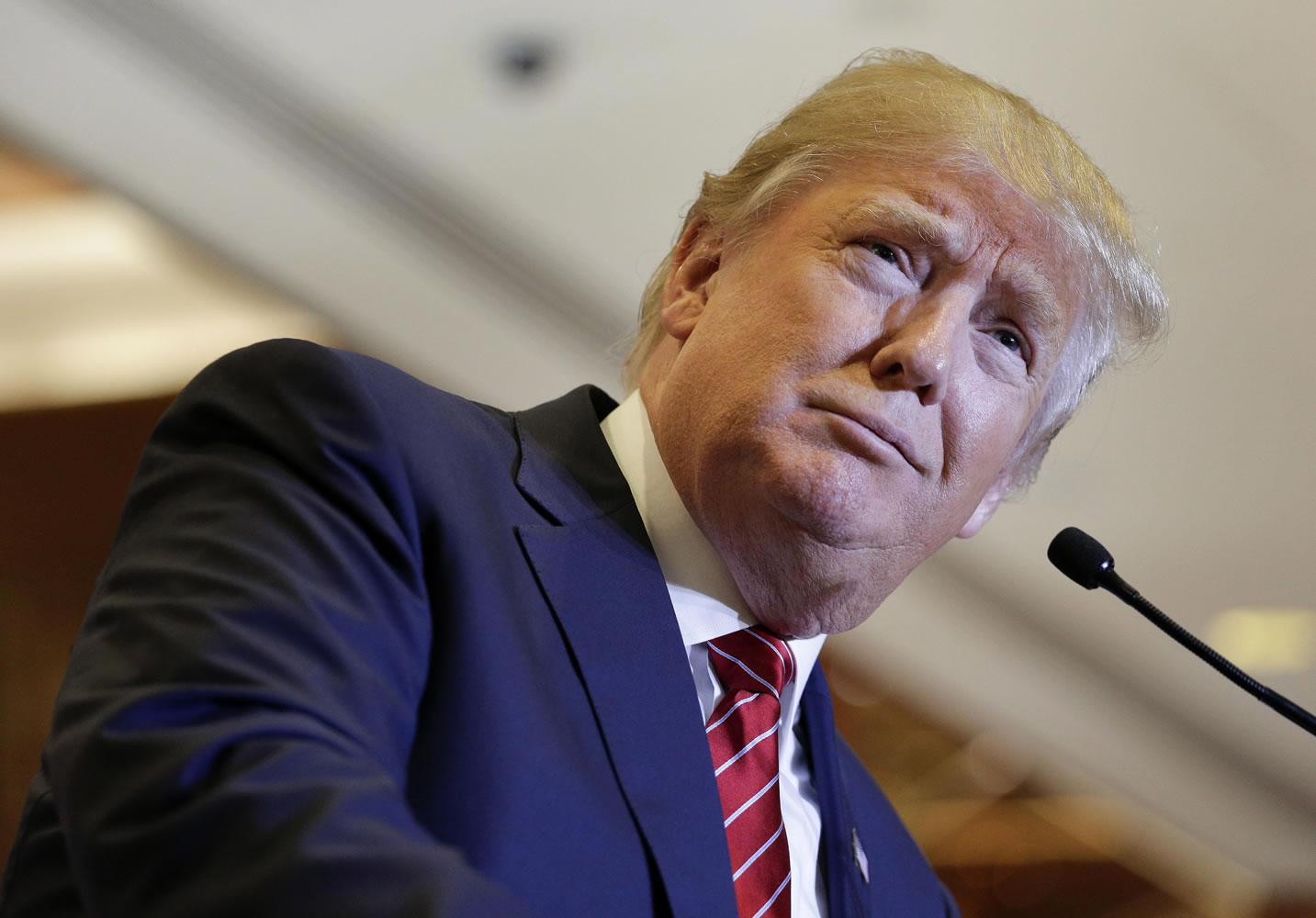WASHINGTON — Republican presidential front-runner Donald Trump touts his tax overhaul plan as a boon for middle-income Americans, but it would also be likely to help the wealthy — including people like himself.
A closer look at some of the claims Trump made Monday in unveiling his tax proposal:
TRUMP: “It reduces or eliminates most of the deductions and loopholes available to special interests and to the very rich. In other words, it’s going to cost me a fortune.”
THE FACTS: Only Trump and his accountant can be sure, since he doesn’t specify which deductions and loopholes he plans to eliminate and has yet to release any of his tax returns.
But it appears likely that Trump’s plan would be a financial boon for someone of his wealth. Trump and his wife would pay 25 percent, instead of the current 39.6 percent, on any income above $300,001. An income statement he released alongside his personal financial disclosure report this past summer reported his 2014 income as $362 million.
His proposal to eliminate the 40 percent tax on inheritances of more than $5.4 million would allow him to pass his estate to heirs tax-free, a savings worth billions given his self-estimated net worth of more than $10 billion.
And by cutting 10 percentage points from the current corporate tax rate of 35 percent, the Trump Organization and its hundreds of subsidiaries would pay less — assuming they don’t already use tax strategies to reduce their effective rate below 15 percent.
TRUMP: “It will provide major tax relief for middle income, and for most other Americans, there will be a major reduction.”
THE FACTS: Trump’s plan will undoubtedly reduce the amount Americans pay in income taxes. The Tax Foundation, which advocates for lower tax rates, said Tuesday its estimates the cost of Trump’s tax cuts at nearly $12 trillion over the next decade.
For single people making less than $25,000 and married couples earning less than $50,000 a year, Trump would get rid of federal income taxes entirely. He also keeps the Earned Income Tax Credit, a benefit low-income Americans can claim even if they pay no taxes under the current system.
Trump would reduce the number of tax brackets from the current seven to four: 0 percent, 10 percent, 20 percent and 25 percent. While such a change would reduce taxes for middle-income earners, the “most other Americans” who would benefit the most would be those who make enough to fall into the current top tax bracket and pay 39.6 percent on income above $413,000.
Steve Gill, a tax and accounting professor at San Diego State University, said that as a group, Americans who are making more than $200,000 a year would pay $400 billion to $500 billion less in taxes annually under Trump’s plan than under the current system.
TRUMP: “And all of this does not add to our debt or our deficit.”
THE FACTS: In order for Trump’s tax rate reductions to be what’s known in Washington parlance as “revenue neutral,” he would have to offset them in some way. Several tax experts, even those who like Trump’s reduction in rates, said his plan appears unable to do so.
Trump proposes making up some of the lost revenue by eliminating some deductions. But he’s ruled out a couple of the biggest ones, for home mortgage interest and charitable gifts, which are worth more than $120 billion a year.
Martin Sullivan, chief economist at a nonprofit tax analysis group and a former expert at the Congressional Joint Committee on Taxation, said adopting Trump’s plan without increasing the deficit “doesn’t look possible if you take the mortgage interest and charitable off the table.”
To get anywhere near breaking even, Sullivan said, Trump would have to eliminate deductions for state and local taxes and perhaps begin taxing retirement savings in pensions and 401(k)s.
Many advocates of tax cuts argue they pay for themselves by boosting economic growth. But Ryan Ellis of Americans for Tax Reform, a low-tax advocacy group that Trump consulted as he developed his proposal, said Trump’s cuts are so large that won’t happen even under the most optimistic scenarios. “It just doesn’t square up,” he said.
The Tax Foundation said the plan’s $12 trillion estimated cost over the next decade could come down to $10 trillion when the economic growth the cuts may spur is taken into account.
TRUMP: “We are reducing taxes, but at the same time if I win, if I become president, we will be able to cut so much money and have a better country. We won’t be losing anything other than we will be balancing budgets and getting them where they should be.”
THE FACTS: Even if Trump’s tax plan wound up being revenue neutral, it wouldn’t bring in enough money to balance the budget.
At the end of the current fiscal year on Wednesday, the Congressional Budget Office projects the deficit will be $426 billion. That means Trump would have to find that much in spending cuts to balance the nation’s books.
Trump pledged Monday to start by going after waste, citing the example of “hammers that cost $800 that you can buy in a store for a tiny amount of money” — a musty reference that dates to a 1980s Pentagon scandal. He also poked fun at a government-funded soccer field that cost $1 million.
To make up the deficit, Trump would need to eliminate all improper or insufficiently documented payments made by the federal government — estimated by the Government Accountability Office at $124 billion in 2014 — more than three times over.



